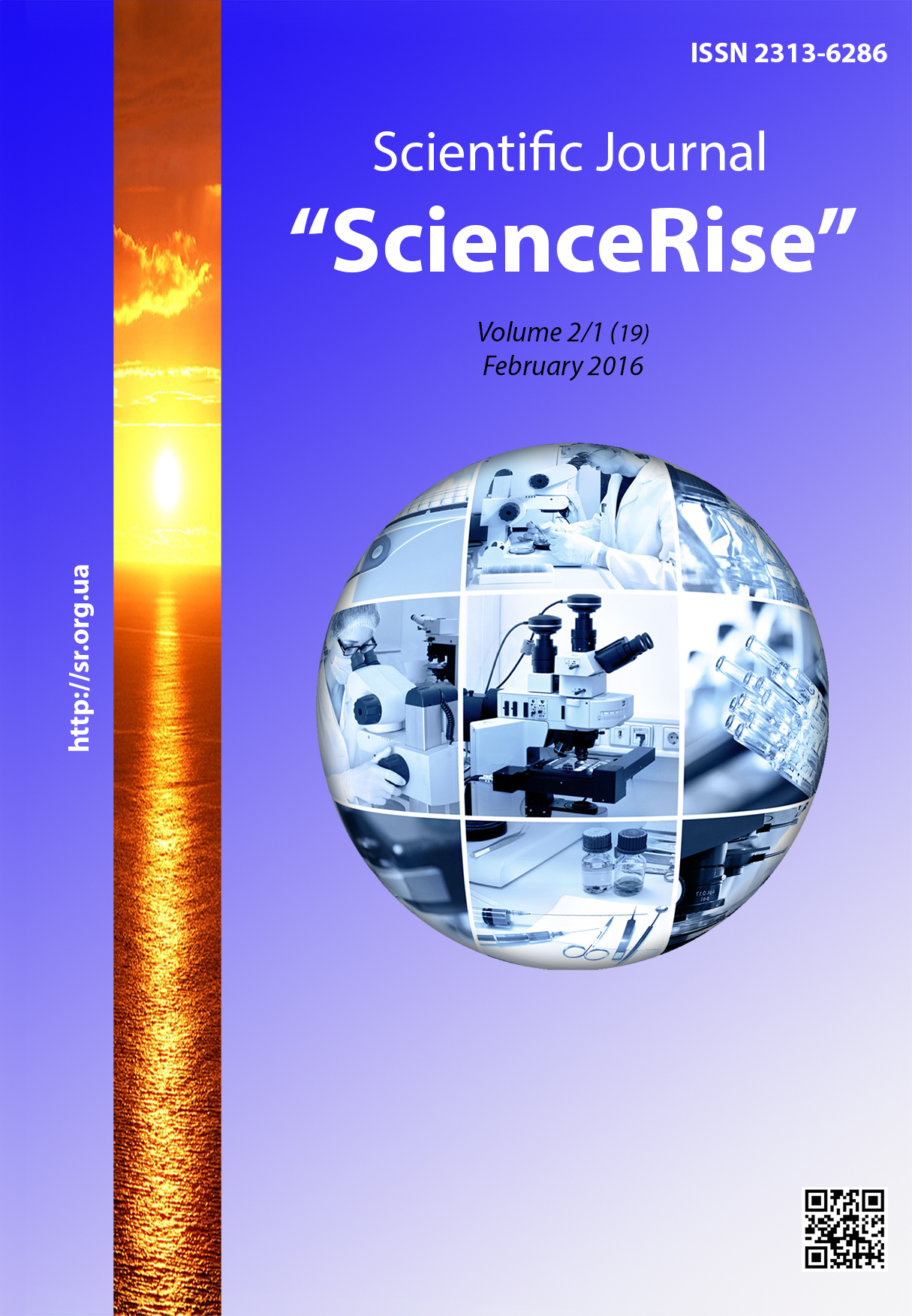Идентификация повреждений дорсальных корешков по характеру продольного распределения вызванных потенциалов спинного мозга
DOI:
https://doi.org/10.15587/2313-8416.2016.60275Ключові слова:
спинной мозг, вызванные потенциалы, амплитуда, продольное распределение, деафферентация, дорсальный корешокАнотація
На кошках изучали соматосенсорные вызванные потенциалы (СВП) спинного мозга при стимуляции периферических нервов в норме и при перерезках дорсальных корешков пояснично-крестцового утолщения. Обнаружено специфическое снижения амплитуд компонентов и локальные сдвиги максимумов на продольном распределении СВП. Сделан вывод, что нарушение проводимости корешков можно изучать путем оценки продольного распределения амплитуд компонентов СВП
Посилання
Qin, W., Bauman, W. A., Cardozo, C. (2010). Bone and muscle loss after spinal cord injury: organ interactions. Annals of the New York Academy of Sciences, 1211 (1), 66–84. doi: 10.1111/j.1749-6632.2010.05806.x
Chew, D. J., Leinster, V. H. L., Sakthithasan, M., Robson, L. G., Carlstedt, T., Shortland, P. J. (2008). Cell death after dorsal root injury. Neuroscience Letters, 433 (3), 231–234. doi: 10.1016/j.neulet.2008.01.012
Hu, Y., Liu, H., Luk, K. D. (2011). Time-frequency analysis of somatosensory evoked potentials for intraoperative spinal cord monitoring. Journal of Clinical Neurophysiology, 28 (5), 504–511. doi: 10.1097/wnp.0b013e318231c15c
Shugurov, О. А., Shugurov, O. O. (2006). Evoked potentials of spinal cord. Dnipropetrovsk: Sciense and Education, 319.
Regan, D., Regan, M. P. (2009). Evoked Potentials: Recording Methods. Encyclopedia of Neuroscience, 29–37. doi: 10.1016/b978-008045046-9.00317-x
Cuddon, P. A., Delauche, A. J., Hutchison, J. M. (1999). Assessment of dorsal nerve root and spinal cord dorsal horn function in clinically normal dogs by determination of cord dorsum potentials. Am. J. Vet. Res., 60 (2), 222–226.
Yanni, D. S., Ulkatan, S., Deletis, V., Barrenechea, I. J., Sen, C., Perin, N. I. (2010). Utility of neurophysiological monitoring using dorsal column mapping in intramedullary spinal cord surgery. Journal of Neurosurgery: Spine, 12 (6), 623–628. doi: 10.3171/2010.1.spine09112
Manjarrez, E., Jimenez, I., Rudomin, P. (2003). Intersegmental synchronization of spontaneous activity of dorsal horn neurons in the cat spinal cord. Exp. Brain Res., 148 (3), 401–413.
Quiroz-González, S., Segura-Alegría, B., Guadarrama-Olmos, J. C., Jiménez-Estrada, I. (2014). Cord Dorsum Potentials Evoked by Electroacupuncture Applied to the Hind Limbs of Rats. Journal of Acupuncture and Meridian Studies, 7 (1), 25–32. doi: 10.1016/j.jams.2013.06.013
Shugurov, O. O., Shugurov, O. A. (2006). The use of pre-advance averaging to improve the information content of registrations in the study of evoked potentials. Human physiol, 32 (5), 619–622.
Rudomin, P. (2009). In search of lost presynaptic inhibition. Experimental Brain Research, 196 (1), 139–151. doi: 10.1007/s00221-009-1758-9
Laumonnerie, C., Tong, Y. G., Alstermark, H., Wilson, S. I. (2015). Commissural axonal corridors instruct neuronal migration in the mouse spinal cord. Nature Communications, 6, 7028. doi: 10.1038/ncomms8028
Pinto, V., Szucs, P., Lima, D., Safronov, B. V. (2010). Multisegmental A - and C-Fiber Input to Neurons in Lamina I and the Lateral Spinal Nucleus. Journal of Neuroscience, 30 (6), 2384–2395. doi: 10.1523/jneurosci.3445-09.2010
Côté, M.-P., Detloff, M. R., Wade, R. E., Lemay, M. A., Houlé, J. D. (2012). Plasticity in ascending long propriospinal and descending supraspinal pathways in chronic cervical spinal cord injured rats. Frontiers in Physiology, 3. doi: 10.3389/fphys.2012.00330
Wall, P. D. (1994). Control of Impulse Conduction in Long Range Branches of Afferents by Increases and Decreases of Primary Afferent Depolarization in the Rat. European Journal of Neuroscience, 6 (7), 1136–1142. doi: 10.1111/j.1460-9568.1994.tb00611.x
Aggelopoulos, N. C., Chakrabarty, S., Edgley, S. A. (2008). Presynaptic control of transmission through group II muscle afferents in the midlumbar and sacral segments of the spinal cord is independent of corticospinal control. Experimental Brain Research, 187 (1), 61–70. doi: 10.1007/s00221-008-1279-y
Réthelyi, M., Szentágothai, J. (1973). Distribution and cnnections of afferent fibres in the spinal cord. Vol. 2. Springer Berlin Heidelberg, 207–252. doi: 10.1007/978-3-642-65438-1_8
##submission.downloads##
Опубліковано
Номер
Розділ
Ліцензія
Авторське право (c) 2016 Олег Олегович Шугуров

Ця робота ліцензується відповідно до Creative Commons Attribution 4.0 International License.
Наше видання використовує положення про авторські права Creative Commons CC BY для журналів відкритого доступу.
Автори, які публікуються у цьому журналі, погоджуються з наступними умовами:
1. Автори залишають за собою право на авторство своєї роботи та передають журналу право першої публікації цієї роботи на умовах ліцензії Creative Commons CC BY, котра дозволяє іншим особам вільно розповсюджувати опубліковану роботу з обов'язковим посиланням на авторів оригінальної роботи та першу публікацію роботи у цьому журналі.
2. Автори мають право укладати самостійні додаткові угоди щодо неексклюзивного розповсюдження роботи у тому вигляді, в якому вона була опублікована цим журналом (наприклад, розміщувати роботу в електронному сховищі установи або публікувати у складі монографії), за умови збереження посилання на першу публікацію роботи у цьому журналі.

